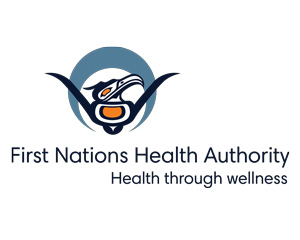
Presenters share message that "everyone has the innate capacity to heal and transform trauma."
If someone were to bite into a lemon right in front of you, what would happen? How would you feel, as you watched their face scrunch up with the shock of biting into something so sour? The situation is visceral enough to cause many of us to recoil in empathy. Our mouths salivate; we feel it vicariously.
This is what Sandra Harris, a Trauma Therapist from Wet'suwet'en Nation, calls the "Lemon Trick," and she demonstrated it to a room of hundreds of people during the "Addressing Trauma" panel at the First Nations Health Authority (FNHA) Mental Health and Wellness Summit.
The point of the trick is to demonstrate how vicarious trauma affects us. We hold onto the stories and pain of our communities and family, just like watching—and feeling—the sourness of a lemon we never actually bit into.
Sandra was one of three panelists, including Jan Ference, Project Director with Pathways to Healing Partnership, and Sunyata Calogeros-Smith, a Somatic Psychotherapist. The session was moderated by Lorraine Naziel of the FNHA. The group presented on a wide-range of topics, including how trauma manifests physically in the body, intergenerational trauma, some basics of Aboriginal focusing therapy, and the importance of supporting healthy brain development, including in the pre-natal stages.
Between the four women, a holistic view of trauma and its effects began to emerge—one in which the body, the spirit and a person's networks of family and community were all accounted for within the visible symptoms of trauma but also in how we can begin to heal.
As Sunyata Calogeros-Smith noted during her presentation, "Everyone has the innate capacity to heal and transform trauma." That is, through an understanding of how trauma affects us and our communities, and by combining traditional knowledge and teachings with new neurological and psychological understandings of how trauma affects the brain, we can begin to chart new paths to healing.
At their core, many of these paths start with kindness. During her presentation on neurology and trauma, Jan Ference emphasized that kindness and connection create opportunities for change in the brain. "Micro-interactions of loving care is actually what heals us," she said. Much of her presentation focused on the importance of providing supports and wrap-around care to mothers and new mothers, including during pregnancy, because of the effects that stress—and family stress—can have on the brain chemistry of young children. Jan also noted how closely these findings align with the teachings of Indigenous Elders and other knowledge keepers.
At the end of the session, the moderator, Lorraine Naziel, closed with a question for the audience: How much of the lemon do you have? How much trauma are you taking on for your community and network? The question was a challenge posed to each person in the audience, asking us to look at ourselves, the responsibilities we each take on and, perhaps, what we can begin to let go of.
The panel supported attendees to reflect on the many ways that trauma can manifest, and to identify new tools and healing pathways—for themselves and the communities they work with.

